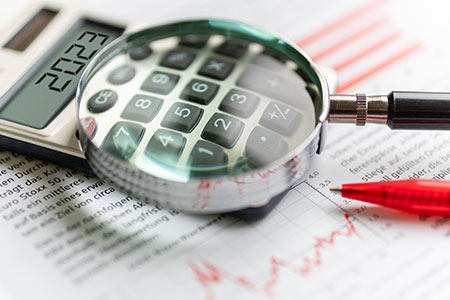How can you put more hard-earned money back into your pockets? Most people default to thinking about budgeting, yet optimising your tax plan could be equally (perhaps more) effective. In January 2023, many UK taxpayers still have time to take advantage of the 2022-23 tax year (ending on 5 April), at which point some crucial tax rules will change. In the next tax year (i.e. 2023-24), certain tax allowances will be less generous such as the Annual Exempt Amount for capital gains tax. In this article, our Carlisle financial planners explain how to make the most of the 2022-23 tax year before the April deadline.
What is changing in April?
A few months ago, in November, the Chancellor released his Autumn Statement detailing some key tax changes to take effect in April 2023. For income tax, the threshold for the 45% tax band will reduce from £150,000 to £125,140. The Annual Exempt Amount for capital gains tax (CGT) will go down from £12,300 to £6,000 per year from 6 April 2023, going further down to £3,000 in 2024. The tax-free Dividend Allowance will decrease from £2,000 to £1,000 from 6 April 2023, and later to £500 in 2024.
Taken together, this paints a more strict tax environment for taxpayers from April 2023. Yet there is still some good news. The property value threshold at which you pay stamp duty, for instance, has doubled from £125,000 to £250,000 and will remain in place. The annual ISA allowance is still going to be £20,000, and the standard Annual Allowance for pension contributions will remain at £40,000 (or 100% of your earnings if these are lower).
No tax cuts have been announced for April 2023. Further changes to the tax system could arrive later in the year, so it will help to be in touch regularly with a financial planner to keep updated.
Why acting early can help
April 2023 might still seem far away at the start of the year. Yet it does creep up quickly. Many people suddenly realise, in March, that they only have weeks to get their affairs in order before the tax year deadline. At which point, many accountants and financial planners are likely to be inundated with other clients. Acting earlier can help ensure that your tax plan gets more priority and attention, allowing more time to meet your adviser in person.
Also, leaving matters until the last minute might hinder you from taking full advantage of your allowances. For instance, you may not have a £20,000 lump sum to commit to your ISA(s) in March 2023. Yet you might be able to set aside some savings each month from earnings between now and then. There is also more time to address issues that you might identify as you review your tax plan, such as tracking down lost savings.
Tax-saving ideas before the deadline
Every individual will have unique financial goals and circumstances. To fully maximise your tax plan before the April 2023 deadline, we suggest speaking with a financial adviser. Yet there are certain ideas to consider before a possible meeting. For certain higher earners, there may be a risk that they are caught out by the lowering of the threshold for the 45% additional rate (from £150,000 to £125,140). One way to mitigate the 45% rate applying to your income is to consider pension contributions. Remember, you pay income tax on your UK earnings minus your pension contributions. So, if your total income for 2022-23 is £160,000 (putting £10,000 in the additional rate) yet you make £10,000 in pension contributions, your earnings are treated as £150,000 for tax purposes. Certain individuals may wish to discuss this option with a financial adviser – e.g. if their earnings are between £125,140 and £150,000.
Those with investment portfolios held outside of a pension or ISA (e.g. buy to lets or shares in a general investment account, or GIA) may also wish to seek advice. In 2022-23, you can earn up to £12,300 in tax-free profits from disposing of such assets, but from 6 April this tax-free allowance will go down to £6,000. One idea might be to use the “bed and ISA” technique to sell certain GIA assets and immediately buy them again inside an ISA. Therein, your investments can generate interest, capital gains and dividends without tax. If you have already maximised your £20,000 ISA allowance for the year, then another idea is to give/sell GIA assets to your spouse or civil partner (which can usually be done tax-free). If he/she has not fully used their ISA allowance, it could enable your household to save more, overall, on investment taxes.
Invitation
If you would like to discuss your financial plan and retirement strategy, then we would love to hear from you. Get in touch with your Financial Planner here at Vesta Wealth in Cumbria, Teesside and across the North of England.
Reach us via:
t: 01228 210 137
e: [email protected]
This content is for information purposes only. It should not be taken as financial or investment advice. To receive personalised, regulated financial advice regarding your affairs please consult your Financial Planner here at Vesta Wealth in Cumbria, Teesside and across the North of England.

